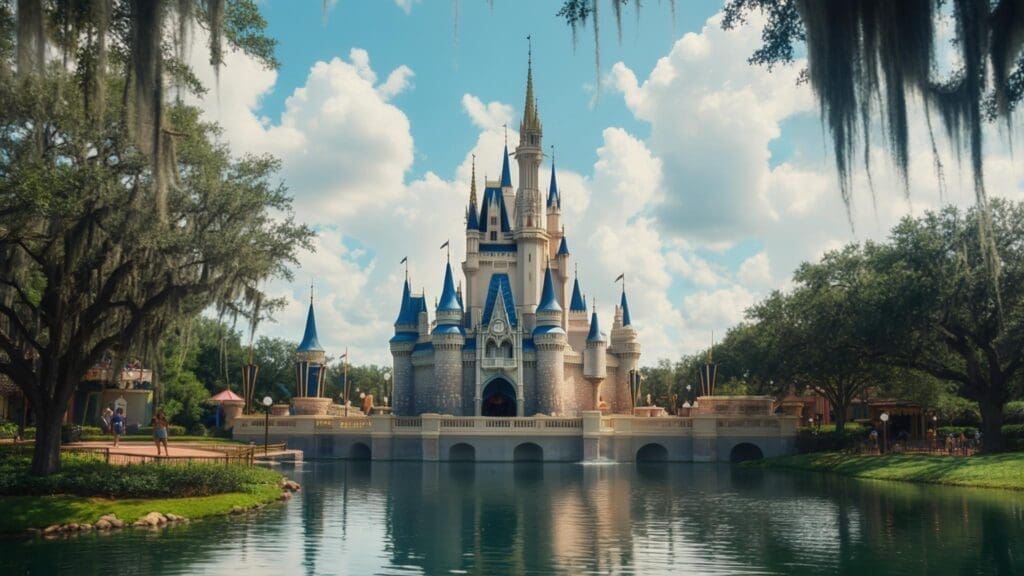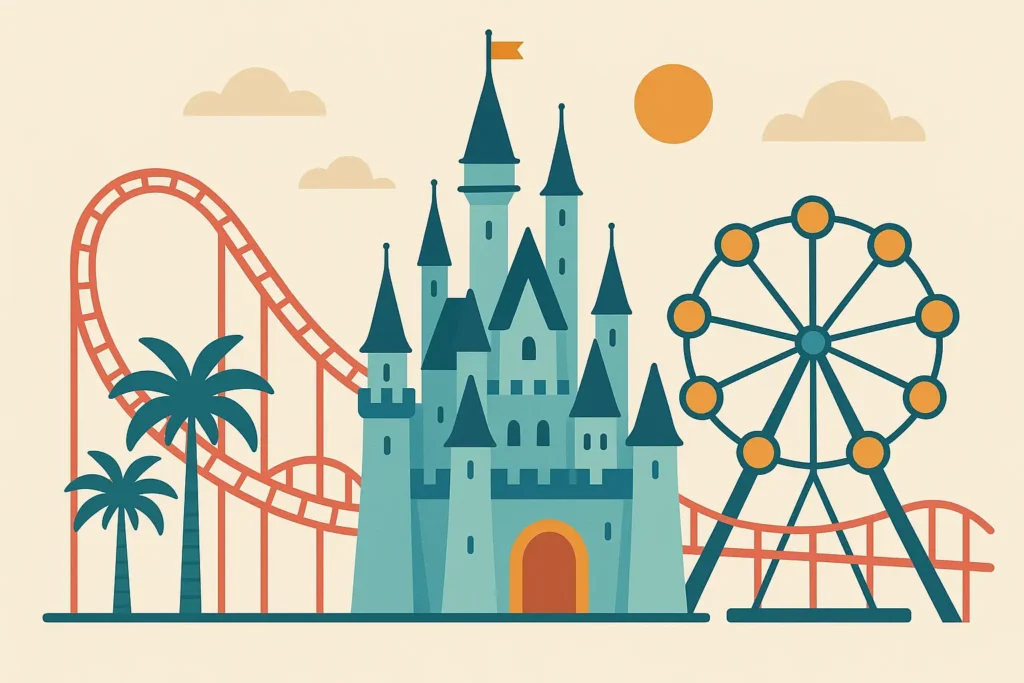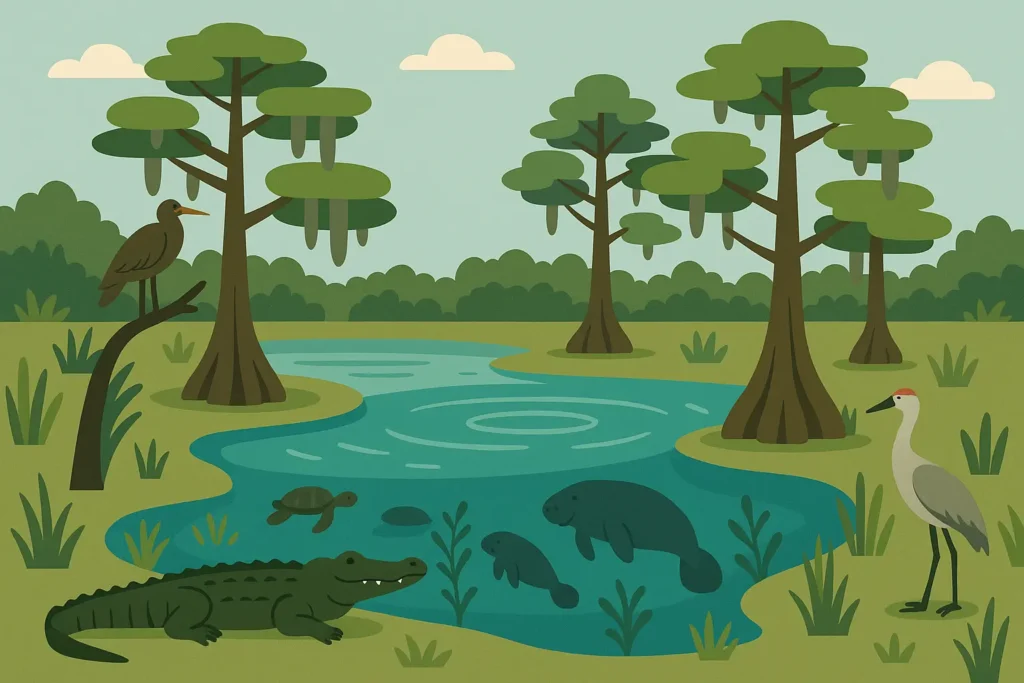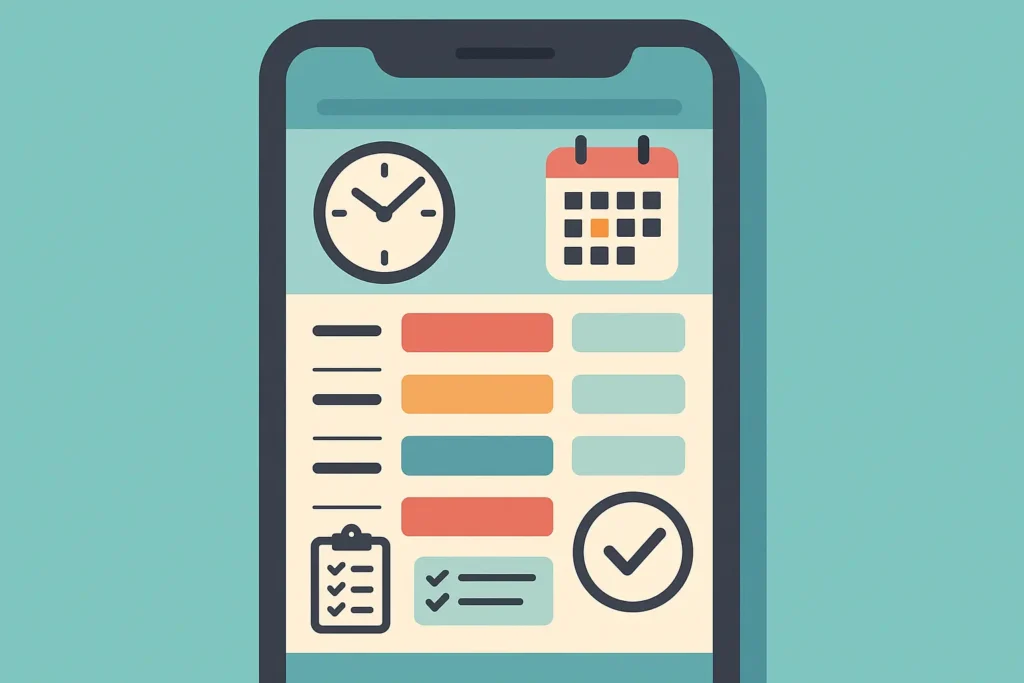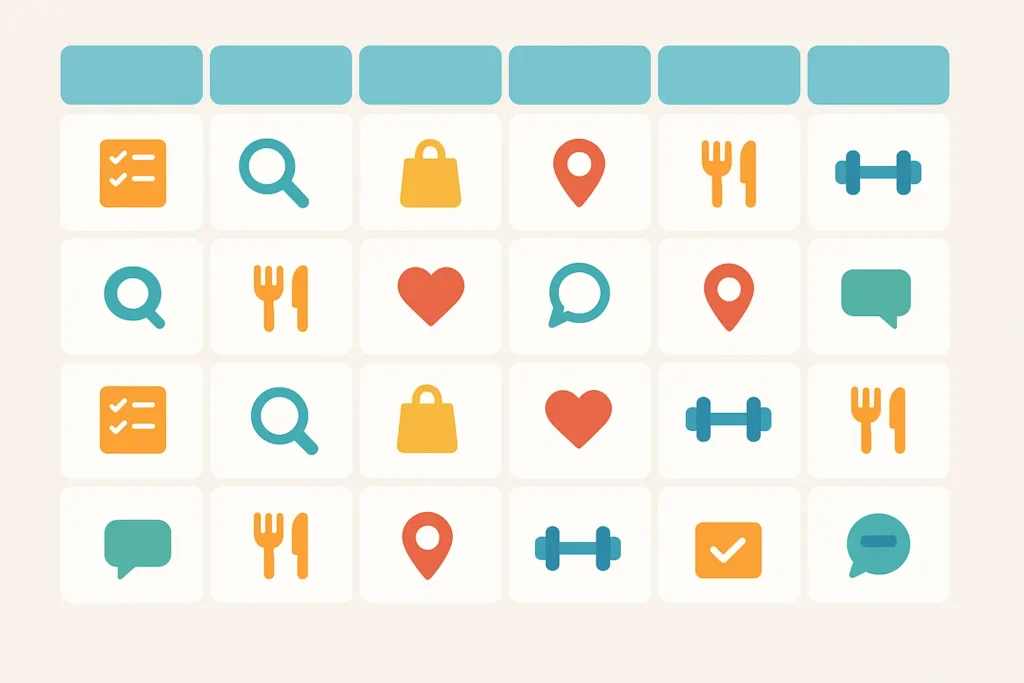Let me guess – you’re staring at your computer screen right now, drowning in Orlando planning websites, wondering how a simple family vacation became more complicated than filing your taxes. Trust me, I’ve been there.
Orlando attracts over 75 million visitors annually, making it one of the world’s most popular vacation destinations. I’m going to walk you through 25 different ways to tackle this magical chaos, broken down into six categories that work for real families with real budgets. Each approach addresses what actually matters to you – whether you’re pinching pennies, traveling with toddlers, or just trying to survive your first Disney experience without losing your mind.
Quick Resources:
I remember staring at my computer screen at 2 AM, trying to plan what seemed like a simple Orlando vacation. The sheer number of options felt overwhelming – Disney World’s four theme parks, Universal’s expanding empire, countless hotels, dining reservations opening 180 days out, and park reservation systems that seemed designed by rocket scientists. According to Magic Guides’ crowd calendar data, theme park attendance varies dramatically throughout the year, with some days experiencing minimal lines while others create hours-long waits. That planning nightmare taught me something valuable: Orlando isn’t just about showing up and hoping for magic – it requires strategic thinking.
Make planning magical with our Vacation Planner
After helping dozens of friends navigate their own Orlando adventures (and making plenty of mistakes along the way), I’ve discovered that successful trips aren’t about following someone else’s perfect plan. They’re about finding the right approach for your specific situation, whether you’re working with a tight budget, traveling with toddlers, or seeking adults-only sophistication.
Create a personalized Orlando itinerary with our Vacation Planner
Here’s the Deal
- Orlando itineraries work best when you stop trying to do everything and focus on what matters most to your group
- Short trips (2-3 days) need laser focus on must-do experiences, while longer stays (10+ days) let you actually breathe and enjoy things
- Budget-conscious families can save $200-400 daily by staying off Disney property, eating quick-service meals, and timing visits right
- Family itineraries need to account for meltdowns, nap schedules, and the fact that your 4-year-old will want to ride Dumbo seventeen times
- If you’re into specific things (food, thrills, characters), plan around those obsessions instead of trying to see everything
- Universal Studios is legit competition for Disney – sometimes better, sometimes different, always worth considering
- Learning the Lightning Lane system and crowd calendars can save you hours of standing in lines
- Orlando has amazing stuff beyond theme parks, and it costs way less
Quick Trips That Actually Work
Short Orlando trips are all about being realistic and strategic. You can’t see everything in a weekend, so don’t try. These itineraries focus on hitting the highlights without running yourselves into the ground.
| How Long You’ve Got | Where to Focus | Don’t Miss These | What You’ll Spend |
|---|---|---|---|
| 2-3 Days | Magic Kingdom + EPCOT | Space Mountain, Pirates, Spaceship Earth | $400-600 per person |
| 4-5 Days | All Disney Parks + Universal | Add Hollywood Studios, Animal Kingdom | $500-750 per person |
| Long Weekend | Disney Parks + Disney Springs | Include character dining, shopping | $450-650 per person |
1. Weekend Warriors (2-3 Days)
Look, two to three days in Orlando is like trying to drink from a fire hose, but it can work if you’re smart about it. This orlando itinerary focuses on Magic Kingdom’s classics, EPCOT’s highlights, and Hollywood Studios’ newest stuff while keeping your expectations realistic.
Here’s the thing – you’ve got to get there before the park officially opens. I’m talking 45 minutes early for Magic Kingdom. Yes, it’s painful, but you’ll knock out Space Mountain, Pirates of the Caribbean, and Haunted Mansion before the crowds hit. Then head to EPCOT for the afternoon – Future World first, then World Showcase for dinner and fireworks.
Day two is Hollywood Studios for Rise of the Resistance (book that paid skip-the-line pass at 7 AM sharp – don’t even think about it, just do it) and Tower of Terror. Spend the afternoon at Disney Springs where you can shop and eat without paying park admission. You’re looking at $800-1,200 per person including a decent hotel, park tickets, and food. This assumes you’re not going during peak times and you’re not buying every piece of Mickey merchandise you see.
Sarah’s Reality Check: Sarah and her sister did exactly this – arrived Friday night, left Sunday. They stuck to Magic Kingdom Saturday and EPCOT Sunday morning, then Disney Springs Sunday afternoon. They hit 12 major attractions, did two character meals, and stayed under $900 each. The secret? They accepted they couldn’t see everything and focused on quality over quantity. Smart move.
2. Long Weekend Plus (4-5 Days)
Four to five days gives you breathing room without needing to take a full week off work. You can actually hit all the Disney parks plus Universal without feeling like you’re running a marathon.
Find your perfect pace with the Vacation Planner
This timeframe lets you do one park per day without the crazy rushing: Magic Kingdom (full day), EPCOT (full day), Hollywood Studios morning with Animal Kingdom afternoon (using park hopper), Universal Studios (full day), and Disney Springs on your departure day. The extra time means you can actually enjoy your meals instead of scarfing down chicken nuggets while running to the next ride.
This works great for working folks who can’t commit a full vacation week but want the complete Orlando experience. You’ll feel like you actually saw things instead of just surviving them.
Budget-Smart Orlando Adventures
Here’s the truth nobody wants to tell you – Orlando is expensive. But you can cut costs by 40-60% if you know where to spend and where to save. These approaches prove you don’t need to take out a second mortgage for magical experiences.
3. Off-Peak Timing Champion
The biggest money-saver? Going when everyone else isn’t. Late January through early March (skip Presidents’ Day weekend) offers cheaper tickets, shorter lines, and hotel discounts up to 35% compared to summer madness.
Time your trip right using the Vacation Planner
During these slower periods, hotel savings alone can be $150+ per night difference. Theme park tickets change prices based on how busy it is, making January visits way cheaper than July. The trade-off? It might be cooler (though rarely below 60°F) and parks close earlier. But here’s the thing – with smaller crowds, you can often do entire parks in single days, so you’re actually getting more value from your tickets.
A 5-day trip drops from $1,200-1,800 during busy season to $600-900 per person during quiet times. Plus, Disney often runs free dining promotions during these periods. It’s a no-brainer if you can swing the timing.
4. Stay Off Disney Property
Staying outside Disney property can save you $100-200 per night while still getting to the parks easily. Yeah, you’ll need to drive or Uber ($30-50 daily), but the savings are huge.
Off-property hotels give you luxury amenities for a fraction of Disney resort costs. The 20-30 minute drive becomes totally manageable, and many hotels offer shuttle services (though they might not align with when you actually want to go). You’ll lose Disney’s early park access and free transportation, but you’ll save enough to splurge on character dining or extend your trip.
5. Quick-Service Food Strategy
Counter-service dining costs 40-50% less than sit-down restaurants and saves you hours of time. Orlando’s quick-service game has seriously stepped up – we’re not talking gas station hot dogs here.
Dole Whips at Magic Kingdom, Ronto Wraps in Galaxy’s Edge, Flame Tree Barbecue at Animal Kingdom, and Les Halles in EPCOT’s France section offer Instagram-worthy meals at reasonable prices. Daily food budgets drop from $85-120 per person for table service to $45-65 for quick-service. Plus, no advance reservations needed, and you can use mobile ordering to skip even the quick-service lines.
| Where You Stay | Nightly Cost | Getting Around | Daily Savings | The Reality Check |
|---|---|---|---|---|
| Disney Deluxe Resort | $400-600 | Free | Your baseline | Early park access, pure convenience |
| Off-Property Hotel | $150-250 | $30-50 | $200-350 | 30-min drive, no early access |
| Vacation Rental | $100-200 | $30-50 | $250-400 | Kitchen, more space, feels like home |
6. Free Stuff Focus
Orlando has tons of no-cost experiences that extend your vacation value without additional admission fees. Resort hopping, Disney Springs entertainment, and seasonal activities provide magical moments without touching your budget.
Take the monorail tour of Disney’s Grand Floridian, Polynesian, and Contemporary hotels – stunning architecture and seasonal decorations for the cost of transportation time. Disney Springs has street performers, window shopping, and people-watching that rivals paid attractions. Fort Wilderness offers free campfire sing-alongs and outdoor movies under the stars.
7. Florida Resident Deals
If you live in Florida, you’ve got access to exclusive discounts and seasonal passes that can cut Orlando costs up to 40%. These offers require proof of residency but deliver serious savings on tickets, hotels, and dining.
Florida Resident Annual Passes give you the best per-visit value if you’re planning multiple trips. Seasonal ticket offers during slower periods stack additional savings on top of resident discounts. Resort discounts up to 35% apply to select Disney properties during off-peak periods.
Family-Focused Magic Making
Family Orlando trips require balancing age-appropriate attractions, realistic scheduling, and group dynamics. Success comes from understanding each family member’s needs while creating shared magical experiences that work for everyone.
8. Toddler-Friendly Reality
Traveling with young kids means modified expectations, gentle rides, and built-in flexibility for meltdowns. This approach prioritizes character interactions, stroller-friendly paths, and early bedtimes while still creating magic.
Toddler schedules work best with 10 AM park arrivals – no early morning battles while still catching shorter lines. Focus on gentle attractions that won’t overwhelm little senses. Plan midday hotel returns for naps (12-3 PM) when parks hit peak crowds anyway. This timing works with natural toddler rhythms while avoiding the busiest periods.
Character dining guarantees character interactions without unpredictable wait times – often the trip highlights for young kids. Daily structure: morning attractions (2-3 experiences), lunch and nap break, afternoon return (3-6 PM), early dinner, bedtime stories. This prevents overstimulation while maximizing enjoyment.
The Johnson Family’s Success Story: With 3-year-old twins, the Johnsons did 10 AM-12 PM park sessions, 12-3 PM hotel naps, and 4-7 PM returns. They prioritized character dining at Chef Mickey’s and Tusker House for guaranteed character time. By accepting fewer attractions but focusing on age-appropriate ones, everyone had magical experiences without meltdowns.
9. Multi-Generational Juggling Act
Coordinating grandparents, parents, and kids requires attractions that work across age groups while accommodating different mobility levels and interests. Success comes from balancing high-energy experiences with relaxed touring.
Simplify family planning with our Vacation Planner
Focus on shared experiences: Pirates of the Caribbean appeals to adventure-seekers while staying gentle for grandparents. Haunted Mansion provides thrills without extreme physical demands. Fireworks shows create magical moments for all ages simultaneously.
Consider connecting rooms or vacation rentals for different bedtimes and morning routines. Grandparents might prefer earlier schedules while teenagers want later starts. Plan strategic rest stops and utilize Disney’s accessibility services and wheelchair rentals so everyone can participate comfortably.
10. Tween/Teen Thrill Seekers
Older kids and teenagers want adrenaline-pumping attractions, later start times, and increasing independence. This itinerary focuses on high-intensity experiences while building confidence and decision-making skills.
Priority attractions: Space Mountain, Big Thunder Mountain, Expedition Everest, Tower of Terror, and Rock ‘n’ Roller Coaster. These provide the excitement level tweens and teens crave. Later park arrival (10-11 AM) works with teenage sleep patterns while avoiding earliest crowds.
Let teens manage their own Lightning Lane selections and mobile orders – builds confidence and investment in the experience. Give them independence opportunities like navigating Disney Springs, managing meal budgets, and choosing between attractions. These skills transfer beyond vacation planning.
11. First-Time Family Survival Guide
First-time Orlando families need comprehensive introductions to major attractions while maintaining realistic expectations. This approach balances must-do experiences with flexible scheduling and learning opportunities.
Essential experiences: character breakfast at Chef Mickey’s, Magic Kingdom parade and fireworks, EPCOT World Showcase exploration, Hollywood Studios movie magic, and Animal Kingdom safari. Realistic expectations mean 6-8 attractions per day, not everything. Build in rest periods and flexible scheduling for unexpected delays, weather, or attraction closures.
The learning curve includes navigating park maps, understanding Lightning Lane systems, and managing expectations about wait times and crowds. First-time families benefit from lower-pressure scheduling that allows discovery and spontaneity.
12. Special Needs Accommodation
Disney’s commitment to accessibility ensures guests with disabilities can experience the same magic as other visitors. Understanding available services and advance planning creates successful trips for families with special needs.
Disney’s Disability Access Service (DAS) provides return times for attractions without traditional line waiting, accommodating guests
Disney’s Disability Access Service (DAS) provides return times for attractions without traditional line waiting, accommodating guests with developmental disabilities, autism, or conditions that make standard queuing difficult. Wheelchair and ECV rentals are available throughout parks, with accessible pathways and attraction modifications.
Service animal policies and facilities support guests requiring assistance animals. Quiet spaces and sensory-friendly options help manage overstimulation, while dietary accommodations address food allergies and special needs. Success requires advance communication with Disney’s accessibility team and flexible scheduling.
When You’re Really Into One Specific Thing
Specialized Orlando experiences cater to specific interests and passions, from culinary adventures to photography expeditions. These focused approaches sacrifice breadth for depth, creating unique vacation memories centered around particular themes.
13. Foodie’s Paradise
Orlando’s culinary scene extends way beyond theme park snacks – we’re talking world-class restaurants, celebrity chefs, and unique dining experiences. This itinerary prioritizes signature dining, seasonal festivals, and exclusive culinary events over traditional attractions.
Signature dining highlights include Victoria & Albert’s Chef’s Table experience ($300+ per person), Monsieur Paul’s French fine dining with fireworks views, and Jiko’s African-inspired cuisine with extensive wine selections. These restaurants require 180-day advance reservations and represent Orlando’s finest culinary offerings.
Seasonal food festivals provide marketplace sampling opportunities – dozens of cuisines in single visits. Daily dining allocations reach $150-300 per person for comprehensive foodie experiences, but the variety and quality justify the expense. You’ll spend less time on traditional attractions, but food-focused travelers often find greater satisfaction in culinary discoveries.
14. Thrill Ride Obsessive
Adrenaline junkies need strategic planning to maximize high-intensity attractions across all Orlando theme parks. This approach prioritizes roller coasters, drop towers, and extreme experiences while minimizing wait times.
Must-experience attractions span all parks: Space Mountain and Big Thunder Mountain ( Magic Kingdom), Test Track and Guardians of the Galaxy (EPCOT), Tower of Terror and Rock ‘n’ Roller Coaster (Hollywood Studios), Expedition Everest and Avatar Flight of Passage (Animal Kingdom), plus Universal’s VelociCoaster and The Mummy.
Get there before the park officially opens – rope drop arrival lets you hit multiple high-demand attractions before crowds build. Those paid skip-the-line passes for the most popular rides justify their $10-20 costs through time savings. This approach often means skipping shows, character interactions, and leisurely dining for maximum attraction quantity. Quick-service meals keep you moving without interrupting touring momentum.
Success requires physical stamina and tolerance for intense experiences, making this approach unsuitable for mixed groups with varying thrill preferences.
15. Character Encounter Collector
Meeting Disney characters requires strategic planning, advance dining reservations, and understanding character schedules. This specialized approach prioritizes character interactions over attractions, creating personalized magical moments and photo opportunities.
Character dining reservations (available 180 days in advance) guarantee interactions without unpredictable wait times. Popular options include Chef Mickey’s for classic characters, Akershus Royal Banquet Hall for Disney Princesses, and Tusker House for Donald Duck and friends.
Meet-and-greet locations throughout parks offer additional character opportunities: Princess Fairytale Hall (Magic Kingdom), Mickey’s Toontown, and Adventurers Outpost (Animal Kingdom). These require wait times but provide more intimate interactions than dining experiences. Seasonal character appearances during special events create unique photo opportunities unavailable during regular park operations.
This approach appeals particularly to families with young children or Disney enthusiasts seeking comprehensive character collections. The focus on interactions over attractions creates different vacation memories centered on personal connections.
16. Photography Expedition
Orlando offers countless Instagram-worthy locations and professional photography opportunities, but capturing perfect shots requires understanding optimal timing, lighting conditions, and crowd patterns.
Golden hour locations provide dramatic lighting: Magic Kingdom’s Main Street during sunrise offers empty park shots, while EPCOT’s World Showcase Lagoon and Animal Kingdom’s Tree of Life shine during sunset. Blue hour captures Cinderella Castle and Spaceship Earth illumination perfectly.
Equipment considerations include tripod restrictions in certain areas, bag policies that limit gear, and weather protection for expensive camera equipment. Many photographers prefer lightweight setups that don’t interfere with attraction enjoyment. The trade-off involves spending significant time waiting for perfect lighting and crowd conditions rather than experiencing attractions, making this approach better suited for repeat visitors or photography enthusiasts.
17. Seasonal Celebration Specialist
Orlando’s seasonal events and holiday celebrations require specific timing and advance planning but deliver unique experiences unavailable during regular operations. These limited-time events often sell out and command premium pricing.
Holiday events include Mickey’s Very Merry Christmas Party ($109-139 per person), Mickey’s Not-So-Scary Halloween Party ($99-129 per person), and various EPCOT festivals throughout the year. These after-hours events provide exclusive entertainment, character appearances, and themed experiences.
Festival timing varies annually: Festival of the Arts (January-February), Flower & Garden Festival (March-July), Food & Wine Festival (July-November), and Festival of the Holidays (November-December). Each offers unique entertainment, food offerings, and merchandise. You need to buy tickets months ahead as popular dates sell out. Event tickets are separate from regular park admission, adding significant costs but delivering experiences impossible during normal operations.
Beyond the Mouse House
Orlando extends far beyond Disney and Universal, offering natural attractions, cultural experiences, and local entertainment that provide different perspectives on Central Florida. These alternatives often cost significantly less while delivering authentic regional experiences.
18. Universal Studios Focus
Universal Orlando provides legit competition to Disney with shorter crowds, different themed experiences, and often more intense attractions. The Wizarding World of Harry Potter alone justifies dedicated Universal visits for many travelers.
Must-experience attractions include both Diagon Alley and Hogsmeade sections of the Wizarding World, connected by the Hogwarts Express (requiring park-to-park tickets at $60+ premium). VelociCoaster represents Universal’s newest high-thrill offering, while The Mummy provides indoor coaster experiences.
Horror Nights (seasonal) transforms the parks into haunted experiences requiring separate tickets and appealing to mature audiences seeking intense scares. Express Passes provide similar benefits to Disney’s Lightning Lane at comparable costs, but Universal’s generally lower crowds make them less essential except during peak periods.
Mark’s Universal-Only Weekend: As a Harry Potter fan, Mark dedicated his entire 3-day Orlando trip to Universal Studios, purchasing park-to-park tickets to experience both Diagon Alley and Hogsmeade. He stayed at Portofino Bay Hotel for early park admission, experiencing the Wizarding World with minimal crowds. By focusing exclusively on Universal instead of splitting time between Disney and Universal, he fully immersed himself in the magical world and left completely satisfied.
19. Beyond Theme Parks
Central Florida’s natural beauty and cultural attractions provide refreshing alternatives to theme park intensity. These experiences cost significantly less while offering authentic local perspectives and outdoor adventures.
Natural attractions include Bok Tower Gardens with historic carillon concerts, Blue Spring State Park for winter manatee viewing, and Wekiwa Springs for natural swimming and kayaking. These locations cost $5-15 per person versus $109+ theme park tickets.
Cultural experiences encompass Orlando Museum of Art, historic Church Street Station entertainment district, and local farmers markets showcasing regional produce and crafts. You’ll need rental cars for most locations, but the freedom to explore at your own pace and significantly reduced costs often justify the additional planning.
20. Adults-Only Escape
Orlando offers sophisticated experiences designed for mature audiences, from craft cocktail lounges to fine dining and evening entertainment. These experiences provide romantic and refined alternatives to family-focused attractions.
Evening entertainment options include Disney Springs’ sophisticated dining and cocktail lounges, Universal CityWalk’s live music and nightclub experiences, and resort lounges at Grand Floridian and Polynesian offering quiet sophistication. Behind-the-scenes tours provide educational experiences and VIP access unavailable to general guests.
Focus on deluxe resorts or Universal’s Portofino Bay for refined atmospheres without children’s activities. This eliminates character dining, kiddie rides, and family entertainment in favor of wine tastings, spa treatments, and intimate dining experiences that create different types of magical memories.
21. Romantic Getaway
Couples seeking intimate Orlando experiences can find romance through carefully selected dining, entertainment, and accommodation choices. These experiences focus on creating shared memories and celebrating relationships.
Intimate experiences include Victoria & Albert’s Chef’s Table for two, private fireworks viewing cruises, couples spa treatments at Grand Floridian Spa, and sunset dining at California Grill or Narcoossee’s with Magic Kingdom views. Private cabanas at Disney’s water parks provide secluded relaxation, while adult-only resort pool areas offer peaceful environments.
Proposal planning services help coordinate magical moments at iconic locations, with photography services capturing special moments permanently. The focus shifts from attraction quantity to experience quality, with longer meals, leisurely resort exploration, and emphasis on creating romantic memories rather than checking off must-do lists.
Next-Level Planning (For the Obsessed)
Advanced Orlando planning techniques use data analysis, historical patterns, and reservation strategies to minimize wait times and maximize experiences. These approaches require significant preparation but deliver substantial on-site benefits.
22. Crowd Calendar Strategist
Data-driven planning using historical attendance patterns and predictive modeling can dramatically improve your Orlando experience by avoiding peak crowds and optimizing touring efficiency.
Optimal timing windows include mid-January through mid-March (excluding Presidents’ Day), late April through mid-May, and September through mid-November. These periods offer the best balance of weather, crowds, and operational hours. Avoid summer months, Thanksgiving week, and Christmas/New Year when crowds reach maximum capacity and wait times extend significantly.
Tools provide crowd predictions based on historical data, school calendars, and special events. These resources help identify specific dates with lower predicted attendance within your available travel windows. The strategy requires flexibility in travel dates but can reduce wait times by 50-75% compared to peak periods.
23. Lightning Lane Master
Advanced Lightning Lane strategies require understanding booking windows, return time management, and strategic selection to maximize attraction access while minimizing costs.
Lightning Lane strategy involves purchasing day-of service ($15-29 per person daily), booking first selection at 7 AM, and stacking afternoon/evening return times while monitoring availability throughout the day. Individual Lightning Lane purchases ($10-20 per attraction) should prioritize the most popular attractions where standby waits often exceed 2-3 hours.
Advanced techniques include understanding booking tiers, managing multiple party members’ selections, and coordinating Lightning Lane returns with dining reservations and show times. The learning curve requires practice and familiarity with the systems, but mastery can reduce total wait time from hours to minutes.
| Lightning Lane Strategy | Cost Per Person | Time Saved | Best For |
|---|---|---|---|
| Lightning Lane Only | $15-29/day | 2-4 hours | Moderate crowd days |
| Individual Lightning Lane | $10-20/attraction | 1-3 hours per ride | High-demand attractions |
| Combined Strategy | $35-60/day | 4-6 hours | Peak season visits |
Day-by-Day Breakdowns
Specific planning examples demonstrate how different approaches translate into actual vacation schedules, with realistic timing, budget estimates, and logistical considerations for successful implementation.
Classic Week (7 Days) Implementation
Day 1 focuses entirely on Magic Kingdom from before opening through fireworks, establishing the Disney magic foundation. Day 2 explores EPCOT’s Future World morning attractions followed by World Showcase dining and cultural experiences. Day 3 tackles Hollywood Studios with early Rise of the Resistance priority, followed by evening Fantasmic show. Day 4 covers Animal Kingdom’s Pandora section early, with afternoon safari when animals are most active.
Day 5 returns to Magic Kingdom for missed attractions and character dining experiences. Day 6 ventures to Universal Studios for Wizarding World exploration. Day 7 provides Disney Springs shopping and leisurely departure. Budget estimates range $1,800-2,500 per person including moderate resort accommodations and dining plan.
Extended Explorer (10+ Days) Approach
Extended stays allow repeat park visits, resort pool days, water park experiences, and local exploration beyond theme parks. This pacing reduces daily pressure while increasing overall experience depth.
Rest days become essential for processing experiences and preventing vacation fatigue. Resort activities, spa treatments, and leisurely dining replace constant attraction focus of shorter trips. Budget estimates reach $2,500-4,000 per person with deluxe accommodations, but per-day costs often decrease due to multi-day ticket discounts and reduced daily intensity.
24. Solo Explorer Adventure
Solo travel in Orlando offers unique freedoms and challenges. Single riders can access shorter lines, make spontaneous decisions, and focus entirely on personal preferences without group compromises. This orlando itinerary maximizes solo travel advantages while addressing potential loneliness and safety considerations.
Solo travelers benefit from single rider lines at major attractions, often reducing wait times by 50-75%. Space Mountain, Test Track, and Expedition Everest offer dedicated single rider queues that bypass regular standby lines. Dining flexibility allows last-minute reservations at popular restaurants, as single seats are easier to accommodate.
Safety considerations include staying aware of surroundings, avoiding isolated areas after dark, and maintaining communication with friends/family about daily plans. The freedom to change plans spontaneously, spend unlimited time on favorite attractions, and skip experiences that don’t appeal creates highly customized vacation experiences impossible with group travel.
25. Last-Minute Magic Maker
Sometimes Orlando trips happen with minimal advance planning due to work schedules, family emergencies, or sudden opportunities. This approach maximizes experiences with short-notice bookings while managing higher costs and limited availability.
Last-minute strategies include monitoring Disney resort cancellations (check daily for openings), utilizing mobile order for dining without advance reservations, and focusing on attractions with consistently shorter wait times. Budget expectations increase 25-40% due to higher hotel rates, limited dining availability, and peak-period timing.
Flexibility becomes crucial – accepting available accommodations, dining options, and attraction wait times rather than specific preferences. This mindset transforms potential disappointments into unexpected discoveries. Mobile apps prove essential for real-time information about wait times, dining availability, and show schedules.
Matching Your Trip to What You Actually Want
Successful Orlando planning requires honest assessment of your priorities, constraints, and expectations. Different itinerary types serve specific needs, and choosing the wrong approach can lead to disappointment regardless of execution quality.
Duration and timing analysis reveals that weekend warriors excel during off-peak periods but struggle during busy seasons when crowds prevent efficient touring. Extended explorer options work best during moderate seasons, providing time to enjoy both busy and quiet periods.
Budget planning evaluation shows that off-property and quick-service strategies can save $200-400 daily for families while maintaining quality experiences. Foodie approaches require $150+ daily dining budgets but deliver unique culinary experiences unavailable elsewhere.
Group demographics compatibility becomes crucial when selecting approaches. Toddler-friendly adventures specifically address young family needs, while thrill-seeker itineraries may alienate family members uncomfortable with intense attractions. The key lies in honest self-assessment about what matters most to your group, then selecting the itinerary approach that best matches those priorities rather than trying to accomplish everything.
Planning a magical Orlando vacation shares many similarities with coordinating life’s most important celebrations. Both require meticulous attention to detail, budget management, timeline coordination, and the ability to handle unexpected challenges while maintaining a positive attitude. Whether you’re navigating Disney’s complex reservation systems or managing the logistics of a special event, success depends on thorough preparation and graceful problem-solving.
If you find yourself naturally drawn to helping others create perfect experiences, managing complex logistics under pressure, and turning potential problems into memorable moments, you might discover that these skills translate beautifully beyond vacation planning. At Bridesmaid for Hire, we understand that the same attention to detail and calm problem-solving abilities that make Orlando itineraries successful are exactly what’s needed to ensure life’s most important celebrations run smoothly.
Ready to put your planning skills to work in a more meaningful way? Contact Bridesmaid for Hire to learn how your talent for creating magical experiences can help others celebrate their most precious moments.
Final Thoughts
Orlando’s magic isn’t just about the attractions, characters, or fireworks – it’s about creating experiences that match your unique vision of the perfect vacation. These 25 itinerary approaches prove there’s no single “right” way to experience Orlando, only the approach that works best for your specific situation, budget, and priorities.
The most successful Orlando trips happen when you stop trying to do everything and start focusing on what matters most to your group. Whether that’s character interactions for young children, thrill rides for teenagers, romantic dining for couples, or budget-conscious strategies for growing families, the key lies in choosing your approach intentionally rather than hoping everything will work out.
Focus your trip with our Vacation Planner
Look, even the best-planned itineraries require flexibility. Weather changes, attraction closures, and unexpected opportunities will arise during your trip. The planning process prepares you to handle these situations confidently rather than letting them derail your vacation. Your Orlando adventure awaits – now you have the roadmap to make it exactly what you want it to be.
1-800-BRIDESMAID
The Newlywed
Card Game
something extra to love
Read the weekly newsletter from Bridesmaid for Hire, 1-800-Bridesmaid, to hear about real stories, from strangers, who need advice on love, life, friendship, and so much more.
Looking for the perfect wedding gift for someone you adore? Grab The Newlywed Card Game. It's a fun and interactive game they can play on their honeymoon or future date nights.
